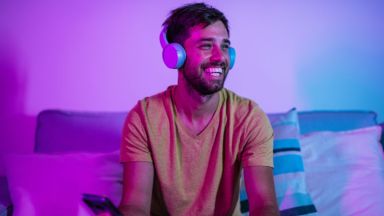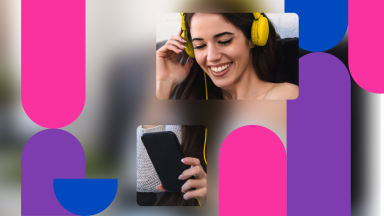In the years since it was first coined, the “LGBT” initialism has expanded to include a much wider range of identities to span sexual orientation, gender identity and expression, as well as sex characteristics. This range of diversity is where the LGBTQ+ community believes inclusive content is lacking.
Within the vast range, the community believes that content inclusive of same-sex relationships is alone in being broadly embraced1. Comparatively, perceptions of inclusion about gender diversity, bisexuality, asexuality and pansexuality are very low.
In 2020, many communities noticed a marked change in brands’ commitment to inclusion through their marketing efforts in response to the global reckoning on racial injustice and treatment of marginalized communities. That point notwithstanding, much of that perspective stems from a low base, as perceptions of inclusion remain far from 100%, especially for groups that many people are far less familiar with, such as pansexual and gender fluid people. It’s also interesting to see how perceptions differ between members of the LGBTQ+ community and non-LGBTQ+ identifying people.
About half of lesbians, for example, believe advertising is very non-inclusive when it comes to their identity group. Comparatively, two-thirds of people who do not identify as LGBTQ+ believe advertising is very non-inclusive of lesbians. The big takeaway here is that in many cases, people outside of the LGBTQ+ community, because they are less exposed to LGBTQ+ ads, often perceive that there is lower inclusivity in advertising compared with people who do identify as LGBTQ+.
The gap is significant, especially for gays and lesbians. The data shows that some LGBTQ+ audiences already see the benefits of more inclusive content and advertising delivered on preferred digital channels that allow for more acute targeting, but viewers outside these targeted channels do not always see the progress. Inclusive content and campaigns can serve the communities they represent as well as broader audiences.
Globally, the LGBTQ+ community in the U.S. believes that advertising is more inclusive of most sexual orientations, particularly those who identify as gay, than in other countries. People in Mexico also have a high perception that portrayals of gay people in advertising are inclusive. Comparatively, perceptions are notably lower in France.
On average, 69% of international LGBTQ+ audiences say they believe efforts are being made to improve inclusion in media, but there are markets where consumers feel inclusion is either stagnating or even declining. Across the nine markets studied, 27% of all respondents believe the level of inclusion has not changed, while 6% of LGBTQ+ respondents in Canada and 5% in Brazil perceive reduced inclusion over the past two years. In Brazil, perceived inclusion has dropped even more among the general population.
In aggregate, the LGBTQ+ community’s perception indicates that current media portrayals offer an incomplete view of LGBTQ+ identities and experiences. Overall, inclusion is improving, but that inclusion focuses mostly on gay and lesbian identities, leaving many vastly underrepresented.
In addition to noting an incomplete view of the whole community, consumers surveyed for our international LGBTQ+ inclusive media perceptions study have strong views about the need for authenticity in media and the abandonment of stereotyping. Across all groups, including those who do not identify as LGBTQ+, avoidance of stereotyping is the No. 1 way to improve inclusion in content, followed closely by the need for more authenticity and realism.
For additional insights, download our recent global LGBTQ+ report.
Source
12022 international LGBTQ+ inclusive media perceptions study



